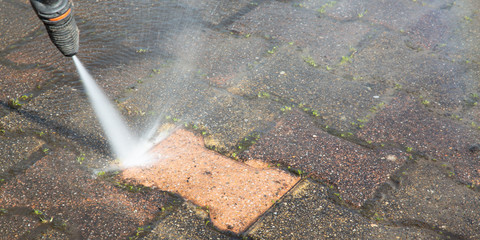The soft hum of a pressure hose hides a revolution. Power washing services are no longer just about blasting away dirt. They have evolved into precise, sustainable, and tech-driven solutions that restore more than just surfaces. The quiet transformation in this industry is shaping how people see maintenance, beauty, and environmental care.
Modern power washing now blends science and design. Advanced nozzles and smart pumps adjust water flow based on the material, reducing waste while increasing efficiency. What was once an aggressive process now becomes gentle yet powerful, preserving the integrity of every surface. This innovation ensures that cleaning is both thorough and mindful. Visit https://www.certifiedsoftwash.ca/ to learn more.

Technicians today think like engineers and artists combined. They understand how water pressure interacts with different textures and coatings. Whether it’s porous stone, treated wood, or aged metal, each material has its own rhythm. The new approach respects these rhythms, achieving deep cleaning without harm.
Eco-awareness has entered every stream of water. Power washing once meant gallons of waste running down drains, but new systems recycle water on-site. Detergents have turned biodegradable, engineered to break down without poisoning soil or wildlife. This balance between power and preservation defines the next era of cleanliness.
Temperature now plays a strategic role in washing science. Heated water jets dissolve grease faster and sanitize naturally, cutting chemical dependence. Cold washing systems, on the other hand, are optimized for delicate finishes. The ability to alternate between the two allows technicians to tailor every job to perfection.
Homeowners are starting to see power washing as rejuvenation, not maintenance. When grime lifts, so does the spirit of a property. Surfaces once dulled by pollution or time suddenly reflect light differently. This emotional impact has turned power washing into an aesthetic ritual.
The technology behind water pressure calibration has become impressively intelligent. Digital sensors analyze real-time resistance, ensuring consistent application without human error. Every square inch receives equal care, minimizing streaks and abrasion. These advances create precision that was unimaginable a decade ago.
Drones are quietly entering the scene. They inspect roofs, walls, and industrial structures before washing even begins. By mapping dirt concentration and structural weaknesses, they create a custom plan. The result is efficiency, safety, and reduced physical risk for technicians.
In urban environments, noise reduction is a silent achievement. Modern machines use variable-frequency motors that minimize sound without losing pressure. This allows washing during hours once considered impossible. Cleanliness now happens quietly, blending into city rhythms instead of interrupting them.
The artistry extends to water reclamation systems. Multi-chamber filters trap oil, dust, and microplastics before they re-enter drainage systems. This closed-loop design symbolizes responsibility. Every drop becomes a statement of care for both structure and planet.
As climate patterns shift, power washing adapts. Seasonal cycles influence cleaning schedules, water temperature settings, and even chemical composition. Smart analytics predict when surfaces are most vulnerable to mold or algae. This data-driven precision prevents damage long before it begins.
Even customer experience has transformed. Booking systems powered by artificial intelligence now assess property types through uploaded photos. They estimate cost, time, and even recommend eco modes. The convenience merges technology with environmental consciousness in seamless harmony.
Community use is another rising trend. Shared residential complexes and small villages now employ collective washing programs. They reduce resource consumption by synchronizing schedules and recycling water communally. Cleanliness becomes a collective achievement, not just an individual responsibility.
In the industrial sector, power washing is becoming a tool for safety audits. Clean surfaces reveal hidden cracks, corrosion, and other maintenance issues. This preventive benefit saves costs and prevents accidents. It redefines cleanliness as part of safety, not merely appearance.
Automation further enhances precision. Programmable washing robots can traverse walls or large floors with millimeter accuracy. They operate tirelessly, ensuring uniform results on every pass. What used to take days now happens in a fraction of the time.
Green chemistry continues to rewrite cleaning formulas. Enzyme-based detergents digest organic matter without harming coatings or plants nearby. They make washing safer for landscapes, preserving gardens and biodiversity. Clean now means coexistence, not conquest.
Another subtle shift lies in surface protection post-wash. Nanotechnology introduces invisible barriers that repel water and grime. This prolongs the clean look for months while reducing the frequency of future washing. Surfaces stay vibrant, and maintenance costs drop naturally.
Residential users are adopting smaller, smarter units inspired by industrial models. Compact but powerful devices connect to mobile apps for precise control. These setups track water use, temperature, and energy in real time. People clean smarter, not harder.
The design of equipment itself reflects sustainability. Lighter materials replace heavy alloys, reducing transport emissions and operator fatigue. Modular designs mean broken components can be replaced instead of discarded. Each innovation aligns with a larger global responsibility.
Power washing has also entered the realm of restoration and preservation. Historic structures require a level of care that traditional washing could never provide. Controlled low-pressure washing removes centuries of grime while respecting original materials. It’s a blend of respect, science, and patience.
In the agricultural world, the technology maintains hygiene across equipment and storage areas. Controlled systems eliminate bacteria without chemical overuse. Clean machinery ensures food safety and longer shelf life. The process safeguards both production and people.
Construction sites benefit immensely too. Post-project washing removes residue, dust, and cement without damaging surfaces. It ensures that the final reveal of a building reflects craftsmanship, not chaos. The first impression of a clean finish speaks louder than words.
Meanwhile, marine industries embrace new underwater washing technologies. Controlled submersible pressure systems clean hulls without scraping protective coatings. This innovation reduces drag and saves fuel while protecting marine ecosystems. Even the ocean feels the gentle strength of progress.
Power washing has turned into a storytelling medium for architects and designers. Clean surfaces highlight form, symmetry, and detail once hidden beneath dirt. It brings out the intended emotion of structures. Through cleanliness, design breathes again.
The balance between power and gentleness defines this new era. Machines no longer dominate the environment—they collaborate with it. This partnership between human, machine, and nature sets the new benchmark for innovation. The harmony feels futuristic yet beautifully human.
Training has evolved alongside technology. Technicians now learn data interpretation, environmental ethics, and even surface chemistry. Their work extends beyond cleaning—it’s applied science. Every wash becomes an experiment in excellence.
The economic dimension of this transformation is significant. Energy-efficient systems and recycled water usage cut costs dramatically. Eco-friendly certifications attract sustainability-driven clients. Clean businesses now mean green businesses too.
Public infrastructure sees benefits that go beyond appearance. Cleaner roads, walkways, and stations reflect civic pride and psychological comfort. People tend to care more for spaces that look cared for. The ripple effect creates healthier, more connected communities.
As smart cities emerge, power washing syncs with urban maintenance networks. Automated scheduling coordinates with traffic data and weather systems. Roads and walls get cleaned efficiently without disrupting daily flow. Cleanliness becomes a rhythm that cities breathe naturally.
Digital record-keeping ensures accountability. Each job leaves behind a digital footprint—date, location, water use, and chemical data. These logs create transparency and track environmental performance over time. It’s cleanliness backed by proof.
The aesthetics of washing have even entered advertising. Before-and-after visuals convey transformation more powerfully than words. They symbolize renewal, trust, and capability. Every clean surface becomes a silent ambassador for quality.
As awareness spreads, people are redefining what it means to live clean. Power washing represents the deeper idea of restoration, not replacement. It encourages sustainability by caring for what already exists. This mindset shapes modern values of resilience and renewal.
New micro-misting systems are emerging for delicate applications like solar panels and glass facades. These systems use precision mist instead of traditional jets. They clean effectively while maintaining the fragile integrity of energy-efficient surfaces. Power meets gentleness in pure form.
Future innovations may include self-cleaning coatings activated by sunlight. Research in photocatalytic materials hints at surfaces that decompose grime naturally. When combined with periodic gentle washing, the cycle becomes nearly self-sustaining. Cleanliness could one day maintain itself.
The cultural meaning of washing continues to expand. Beyond maintenance, it’s seen as a metaphor for clarity and fresh beginnings. Clean spaces inspire clear thinking and renewed motivation. The process purifies not just places, but perspectives.
What was once viewed as a labor-intensive job has become a sophisticated environmental craft. It bridges sustainability, engineering, and human well-being. Each wash today carries the intelligence of innovation and the grace of purpose. The humble act of cleaning has never been so powerful.
In this age of conscious living, the rise of smart power washing reflects a broader truth. The tools we use mirror the values we hold. By cleaning smarter, quieter, and kinder, we redefine what progress looks like. The world doesn’t just need to shine—it needs to breathe.

